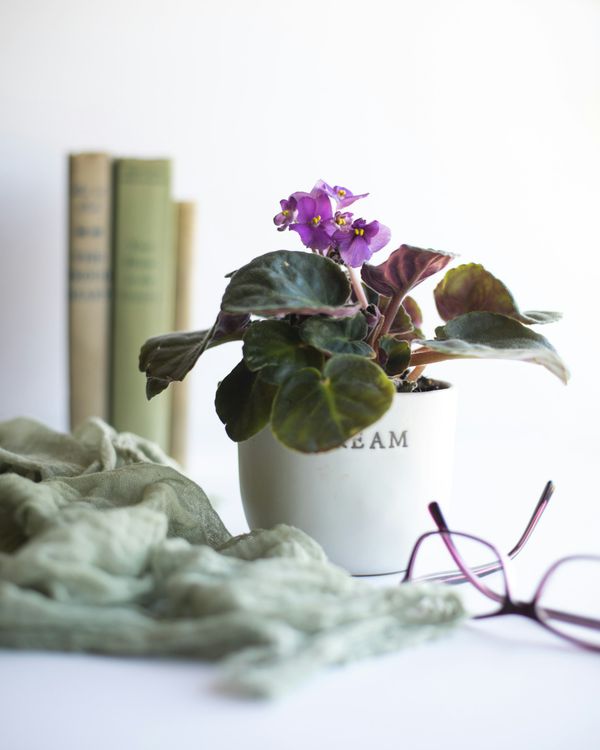African Violet Care Guide
How to grow and care for African Violet (Saintpaulia spp.)
Saintpaulia spp., commonly known as African Violet, are beloved houseplants renowned for their charming, vivid blooms and compact foliage. Native to Tanzania and adjacent southeastern regions of Kenya, these plants have become popular worldwide due to their ease of care, stunning appearance, and ability to bloom year-round under the right conditions. Perfect for adding a splash of color indoors, African violets can thrive and flourish with a little bit of attention and the right environment.

Disclosure: This content includes affiliate links, which means we may earn a commission if you click on a link and make a purchase. As an Amazon Associate, we earn from qualifying purchases. This comes at no extra cost to you and helps offset the cost of running Leafwise. Please read our disclaimer for more info.
Table of Contents
Care
Light
African Violets thrive in bright, indirect sunlight. Direct exposure can scorch their leaves, so a north- or east-facing window is ideal. If natural light is limited, use fluorescent or LED grow lights for 12–14 hours a day, placing them 8–12 inches above the plant. Scorched or bleached leaves may indicate too much light, while leggy growth or lack of blooms suggests insufficient light.
Temperature
Maintain temperatures between 65–75°F (18–24°C). Avoid drafts and sudden changes, as African Violets are sensitive to environmental fluctuations.
Watering
Water carefully, avoiding the leaves to prevent spotting and rot. Use lukewarm, non-chlorinated water and keep the soil lightly moist—never soggy. Bottom-watering is ideal for avoiding crown rot and water contact with foliage.
Humidity
These plants prefer high humidity, ideally around 80%. Raise humidity by using a humidifier, pebble tray, or by grouping plants. Avoid letting moisture accumulate directly on the leaves.
Soil
Choose a well-draining, lightweight potting mix designed for African Violets. This helps prevent compaction and water retention that can lead to root problems.
Fertilization
Feed every 3–4 weeks during the growing season with a balanced, diluted, water-soluble fertilizer. Over-fertilization may cause leaf burn or stunted growth. Suspend feeding in fall and winter when growth naturally slows.
Maintenance
Grooming
Remove faded blooms and yellowing leaves regularly to promote fresh growth and a neat appearance. Rotate the pot every so often to ensure even growth toward the light.
Repotting
Repot every 1–2 years in spring or when root-bound. Use a pot just slightly larger than the root ball to avoid excess moisture retention, and refresh the potting mix each time.
Propagation
Propagate African Violets easily with leaf cuttings:
- Choose a mature, healthy leaf from the base of the plant and cut it with a 1–2 inch stem.
- Insert the stem into a small pot filled with well-draining soil.
- Place the cutting in a warm, bright area out of direct sunlight.
- Keep the soil lightly moist. Roots and new leaves should appear in 3–4 weeks.
Common Issues
Pests
- Symptoms: Sticky residue, misshapen growth, or visible bugs.
- Cause: Aphids, mites, or mealybugs.
- Solution: Inspect frequently. Treat infestations with insecticidal soap or neem oil.
Diseases
Powdery Mildew
- Symptoms: White, powdery coating on foliage.
- Cause: Poor ventilation or excessive humidity.
- Solution: Improve air circulation and avoid wetting leaves. Apply fungicide if needed.
Root Rot
- Symptoms: Wilting, yellowing leaves, foul odor from soil.
- Cause: Overwatering or inadequate drainage.
- Solution: Use a proper African Violet mix. Water with care and repot if necessary.
Yellowing Leaves
- Symptoms: Pale or uniformly yellow leaves may indicate nutrient deficiencies or improper watering; patchy yellowing may suggest overwatering or disease.
- Cause: Overwatering, underwatering, or lack of nutrients.
- Solution: Check moisture levels and adjust watering. Apply diluted fertilizer as needed.
By following these expert tips, your African Violets will reward you with healthy foliage and beautiful blooms throughout the year.
